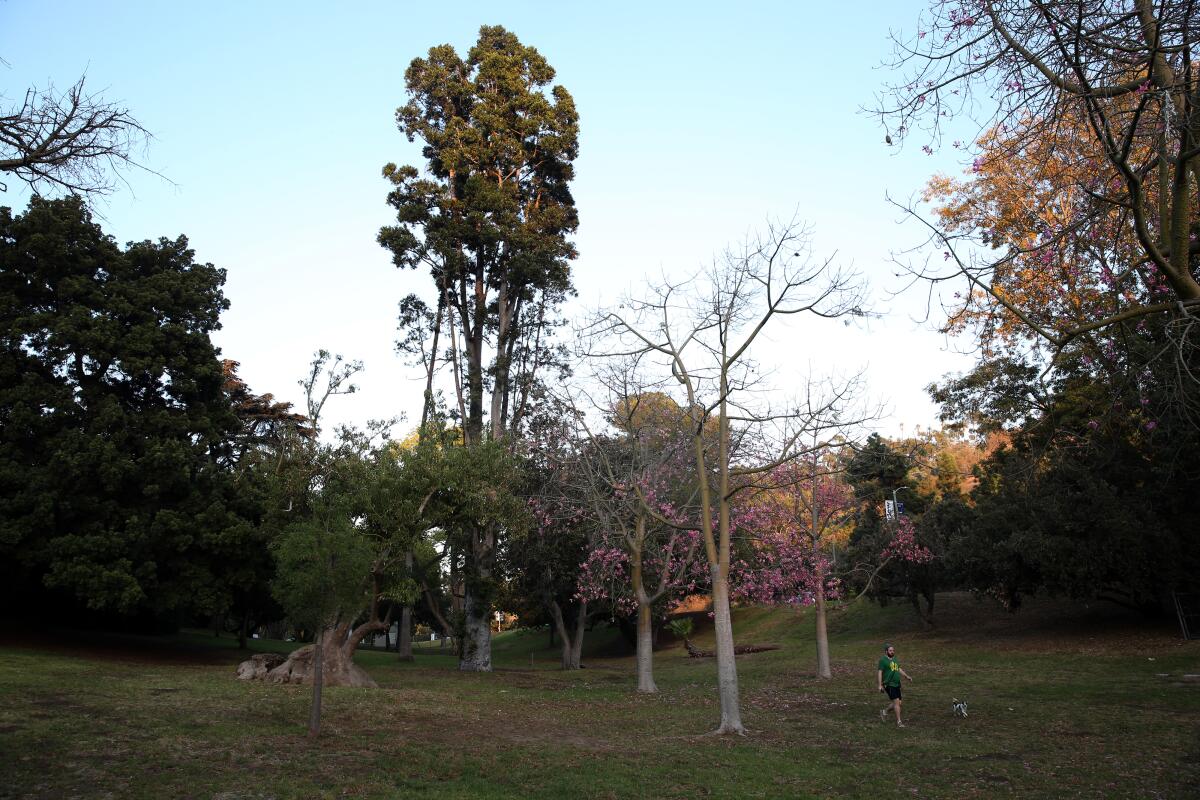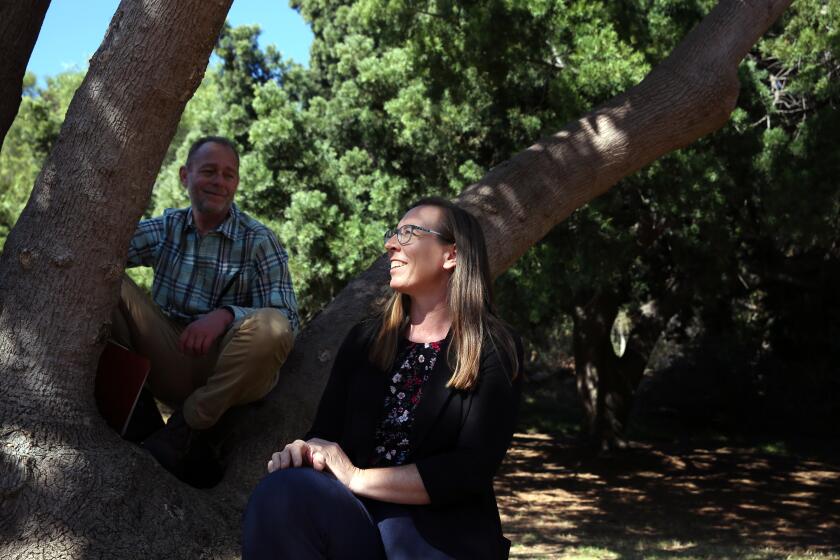L.A.’s free tree giveaway for yards and streets hopes to bring 90,000 new plantings

Want a free tree for your yard or neighborhood? L.A.’s Green New Deal to plant 90,000 trees in the city over the next two years is a bonus for residents. The city will give out up to seven free yard and/or street trees to qualifying residents. More than two dozen species are listed on the city’s website, with information about their projected height and defining characteristics. Most are drought-tolerant.
Small trees include crape myrtles, which can grow to a height of 25 feet and have pink, red or white flowers. Medium trees include silk floss trees, which can reach 25 to 35 feet in height and have pink flowers; evergreen olive trees; and jacarandas, with their mesmerizing blue or lavender flowers. Jacarandas can grow to 50 feet high. Large trees, some of which can reach 80 feet tall, include coast live oaks, which are native to parts of L.A.; Canary Island, Italian stone and African fern pines; and deodar cedars, native to the Himalayas.
“A family can sit at their computer in their PJs, pick out a tree online and have it delivered to their yard,” said L.A.’s first forest officer, Rachel Malarich. “All the work is done for them up to the actual planting. But don’t worry. The trees come with stakes, ties and fertilizer pellets, along with easy-to-follow instructions on how to plant them.”
Neighbors can get together and request free trees for their street on the City Plants website. “One of our nonprofit partners will come and assess the location,” Malarich said. “If it meets our criteria — enough space between the sidewalk and the road; no low overhead power lines — they will obtain the necessary city permits and plant the trees for them. The neighbors must sign an agreement to water them for at least the first five years.”
Residents who qualify for yard trees must also sign a commitment to water them. The first five years of a tree’s life are the most important. “If you don’t check once a week, the tree could either die or get stressed out and stop growing,” Malarich said. “If you get it past that point, you can slow down on the watering and enjoy your relationship to a living thing as you watch it grow.”
Malarich advises residents to check their tree once a week. “Before you start your weekend, or when you take out the trash, stick your finger in the soil and see if it’s moist 4 inches down,” she said. “If it’s dry, give it 10 to 15 gallons of water; if it’s moist, wait until next week. You can kill a baby tree by over-watering it.”
“Think of a tree as a baby,” Long Beach City College horticulture professor Jorge Ochoa said. “You need to feed it and invest time in training it to be the best it can be. If your baby grows up healthily, it will give you the pleasure and satisfaction of shade and beauty for many years.”
Info: Go to cityplants.org or call (213) 473-9950.
More to Read
Sign up for The Wild
We’ll help you find the best places to hike, bike and run, as well as the perfect silent spots for meditation and yoga.
You may occasionally receive promotional content from the Los Angeles Times.











